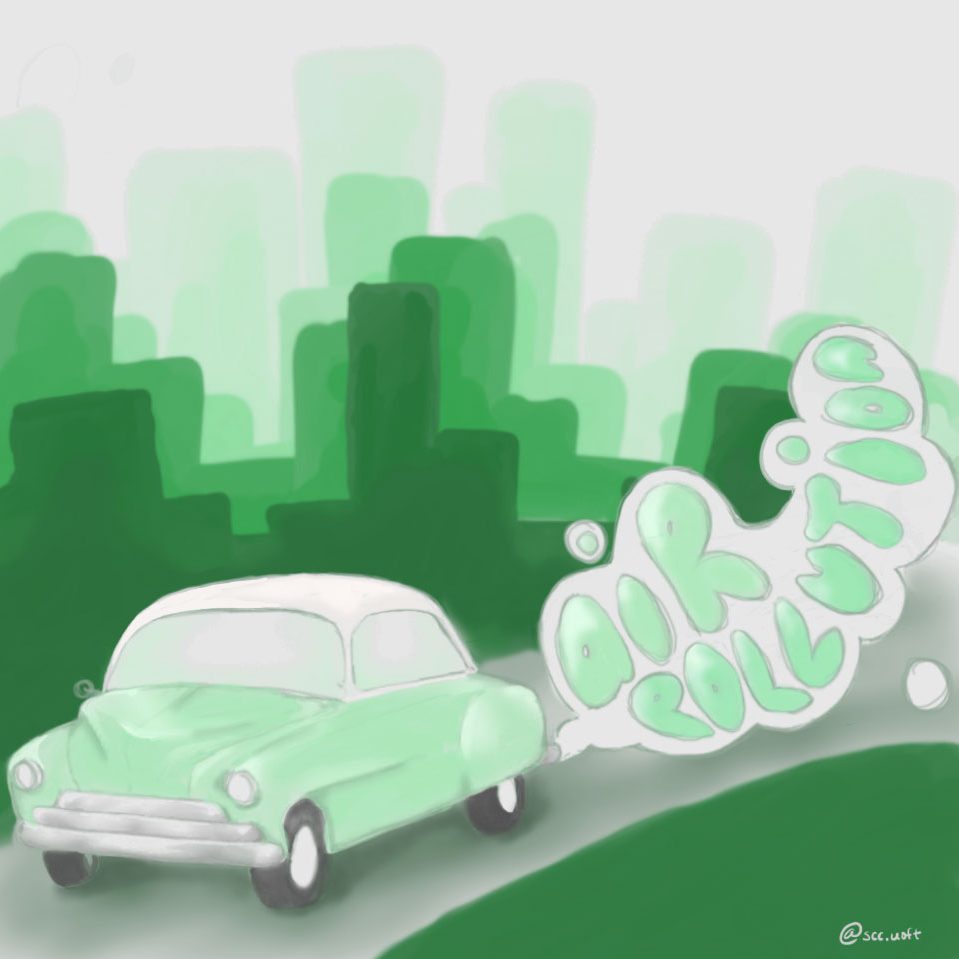
Written by Alexandra Nitoiu
Illustrated by Eugenia Yi
Breathing isn’t supposed to be dangerous, it gives us life. But that doesn’t seem to be the case anymore. Smoking isn’t considered socially acceptable now but our health is still in jeopardy with every breath we take, and the culprit is more insidious than we could’ve ever expected. Air pollution, long known to damage human health, might not affect everyone equally, but with car exhaust and fumes from burning fossil fuels clogging up the air everywhere, no one is safe from it.
Due to rapid industrialization, low and middle-income countries as well as the South-East Asian and Western Pacific regions are burdened by outdoor air pollution more than the rest of the world—but the effects are felt everywhere. Globally, 9 out of 10 people breathe polluted air, and it kills 7 million people every year; almost a third of all deaths from stroke, lung cancer, heart and lung diseases are caused by air pollution. Which is why in 2019, the World Health Organization declared air pollution to be the greatest environmental risk to our health.
The main measure that’s used to measure air quality, the Air Quality Index, evaluates the concentrations of five pollutants in the air: ground-level ozone, particle pollution (like smoke and metals), and toxic gases like carbon monoxide, sulfur dioxide, and nitrogen dioxide. The World Health Organization, on the other hand, considers the safe level of exposure to air pollution to be 10 PM2.5, or 10 particles with a diameter of 2.5 microns or less. Their tool, BreatheLife, compares pollution levels in cities all over the world to that standard. For example, Mumbai has pollution levels 6.4 times the safe level and has 1.8 million deaths from air pollution annually while Beijing has levels 7.3 times the safe level with 1.9 million deaths annually. In contrast, Toronto is at 10% below the safe level with only 6,000 annual deaths from air pollution; but that hardly means we’re in the clear! A recent study led by researchers at U of T’s Faculty of Applied Science and Engineering shows that traffic emissions—especially from trucks—in Toronto and Vancouver greatly increase the concentrations of air pollutants such as nitrogen oxides, black carbon, metals, carbon monoxide, and carbon dioxide. Led by Greg Evans, the study was motivated by the fact that nearly 30% of Canadians live within 250 metres of a major road, including about half of Toronto’s residents. The study also found that diesel trucks in particular emit exhaust at incredibly and surprisingly high levels considering that it is a carcinogen. Emissions were also found to be worse in the winter, which Evans suggests is because emission treatment systems on diesel vehicles are less effective at colder temperatures.
So the next time you’re going home after a long day, take a look around you at the vehicles on the road and consider all those invisible particles filtering through your lungs with every breath you take. When it comes down to it, we all breathe the same air, and both local and global changes need to be made to ensure that it’s as clean as possible.
Sources:
- https://www.who.int/emergencies/ten-threats-to-global-health-in-2019
- https://www.who.int/air-pollution/news-and-events/how-air-pollution-is-destroying-our-health
- https://www.nationalgeographic.com/environment/global-warming/pollution/
- https://breathelife2030.org/city-data-page/?lang=en&city=2556
- https://www.utoronto.ca/news/national-air-pollution-report-highlights-rush-hour-traffic-diesel-truck-emissions-major-areas
- https://www.cbc.ca/news/technology/air-pollution-study-1.5339472